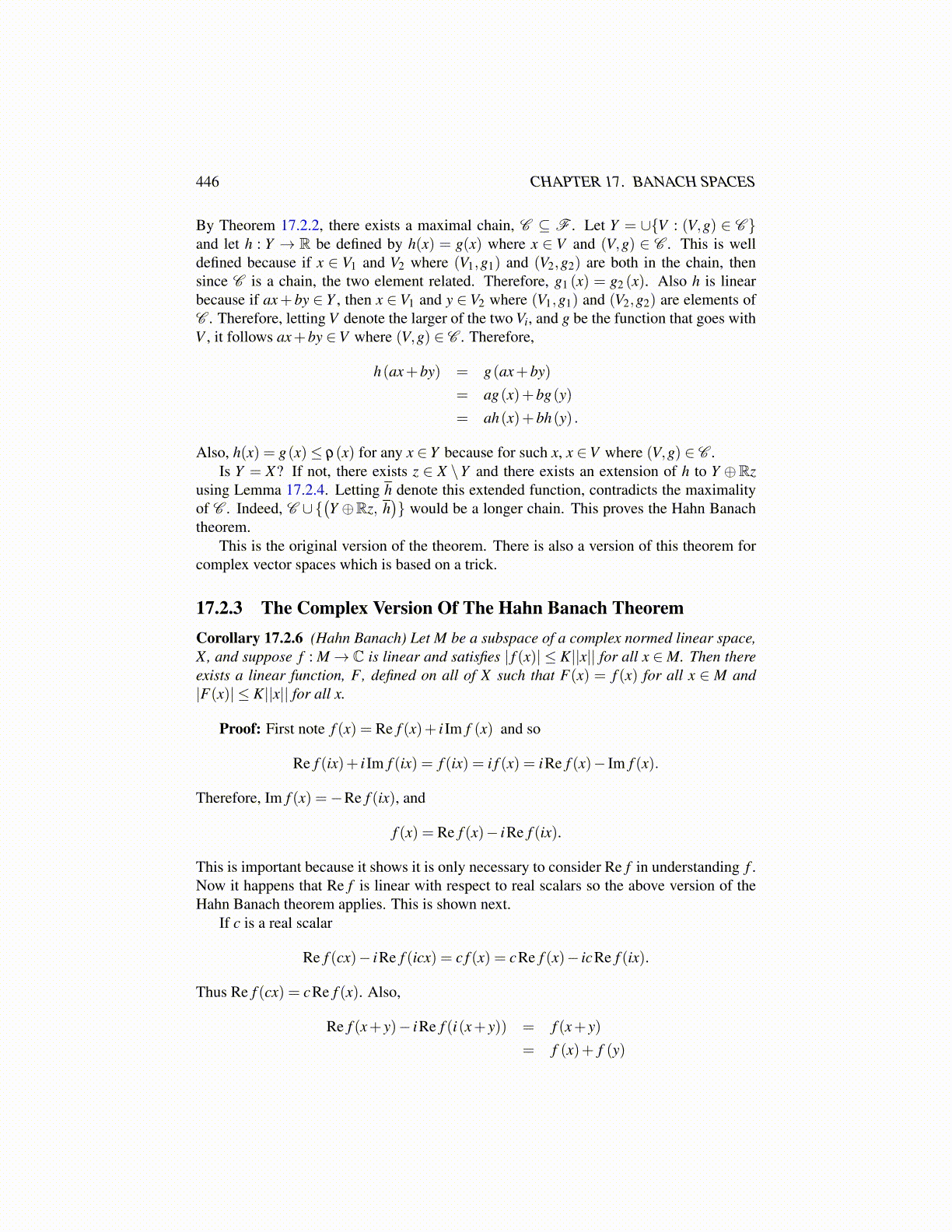
446 CHAPTER 17. BANACH SPACES
By Theorem 17.2.2, there exists a maximal chain, C ⊆ F . Let Y = ∪{V : (V,g) ∈ C }and let h : Y → R be defined by h(x) = g(x) where x ∈ V and (V,g) ∈ C . This is welldefined because if x ∈ V1 and V2 where (V1,g1) and (V2,g2) are both in the chain, thensince C is a chain, the two element related. Therefore, g1 (x) = g2 (x). Also h is linearbecause if ax+by ∈ Y , then x ∈ V1 and y ∈ V2 where (V1,g1) and (V2,g2) are elements ofC . Therefore, letting V denote the larger of the two Vi, and g be the function that goes withV , it follows ax+by ∈V where (V,g) ∈ C . Therefore,
h(ax+by) = g(ax+by)
= ag(x)+bg(y)
= ah(x)+bh(y) .
Also, h(x) = g(x)≤ ρ(x) for any x ∈ Y because for such x, x ∈V where (V,g) ∈ C .Is Y = X? If not, there exists z ∈ X \Y and there exists an extension of h to Y ⊕Rz
using Lemma 17.2.4. Letting h denote this extended function, contradicts the maximalityof C . Indeed, C ∪{
(Y ⊕Rz, h
)} would be a longer chain. This proves the Hahn Banach
theorem.This is the original version of the theorem. There is also a version of this theorem for
complex vector spaces which is based on a trick.
17.2.3 The Complex Version Of The Hahn Banach TheoremCorollary 17.2.6 (Hahn Banach) Let M be a subspace of a complex normed linear space,X, and suppose f : M→ C is linear and satisfies | f (x)| ≤ K||x|| for all x ∈M. Then thereexists a linear function, F, defined on all of X such that F(x) = f (x) for all x ∈ M and|F(x)| ≤ K||x|| for all x.
Proof: First note f (x) = Re f (x)+ i Im f (x) and so
Re f (ix)+ i Im f (ix) = f (ix) = i f (x) = iRe f (x)− Im f (x).
Therefore, Im f (x) =−Re f (ix), and
f (x) = Re f (x)− iRe f (ix).
This is important because it shows it is only necessary to consider Re f in understanding f .Now it happens that Re f is linear with respect to real scalars so the above version of theHahn Banach theorem applies. This is shown next.
If c is a real scalar
Re f (cx)− iRe f (icx) = c f (x) = cRe f (x)− icRe f (ix).
Thus Re f (cx) = cRe f (x). Also,
Re f (x+ y)− iRe f (i(x+ y)) = f (x+ y)
= f (x)+ f (y)